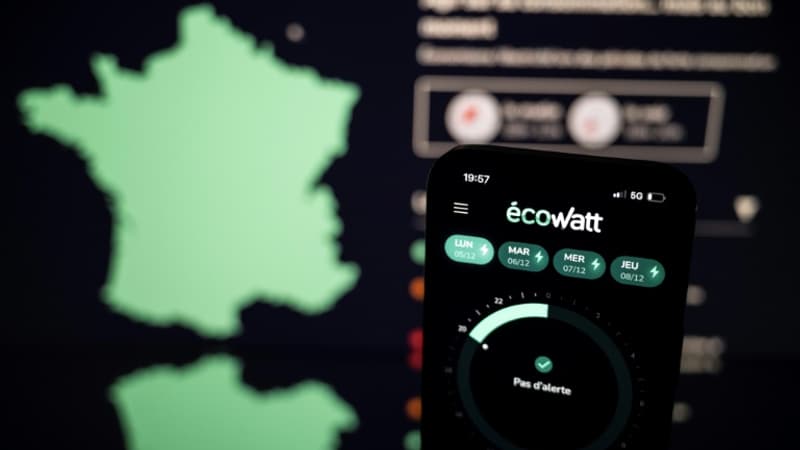Almost eleven months ago, a cold wave hit France and raised fears about the issuance of the first orange Ecowatt signal for the winter, synonymous with an electrical grid under tension. Finally, no load shedding will have occurred and the green color will have persisted throughout the winter period for two main reasons: the drop in national consumption of around -9% compared to winters during the reference period 2014-2019 and the use of imports from neighboring countries to ensure our security of supply.
To this tricolor code is now added a new green signal “carbon-free hours” for the alert system intended to warn users of a risk of tension in the network and request a change in their consumption. As its name indicates, this signal indicates at what times of the day, minimum of night, solar hours, spring, the electrical consumption can be covered by the combined production of the nuclear, hydraulic, wind and solar park, and can therefore be considered “carbon-free”, that is, they do not emit greenhouse gases.
A signal that responds to the challenge of reducing CO2 emissions from the electric mix
The manager of the electric transmission network specifies that “these especially favorable hours for consumption are more frequent at night and in the afternoon from spring to autumn, but they also occur in winter during periods of mild temperatures, high renewable production or the weekends”.
On average, the carbon-free proportion is greater than 90%, but this proportion can therefore vary depending on the hours, days and months of the year. According to RTE, around 40% of working hours can be considered completely carbon-free over the course of a year, “that is, French consumption could be entirely covered by carbon-free national production (nuclear and new energies).”
According to a simulation carried out during the first eight months of 2023, the proportion of carbon-free hours reaches 50% during the night due to low consumption, but also in the afternoon during spring and summer thanks to solar production. On the contrary, this proportion is a minority in the morning and even more so at night due to high consumption. Within a day there are two time slots between noon and 4 p.m. and between 11 p.m. and 5 a.m.
In addition to the issue of security of supply, the new version of Ecowatt, available from Wednesday, also aims to maximize the use of low-carbon production and reduce CO2 emissions from the electricity mix through this signal. “Although French electricity production already emits very little CO2 throughout the year, by favoring hours of carbon-free consumption, French production can get closer to 0 emissions,” estimates RTE.
Source: BFM TV


